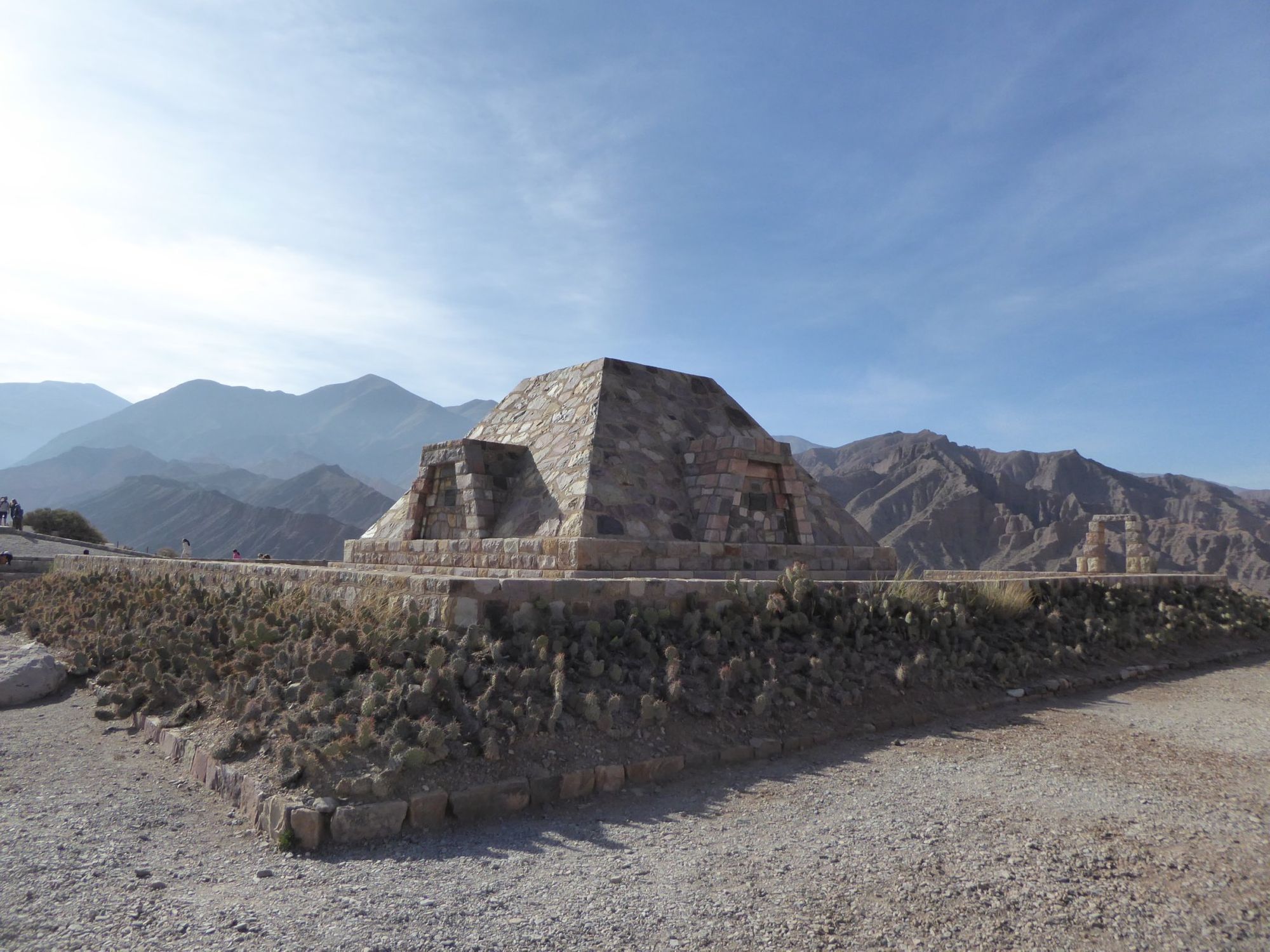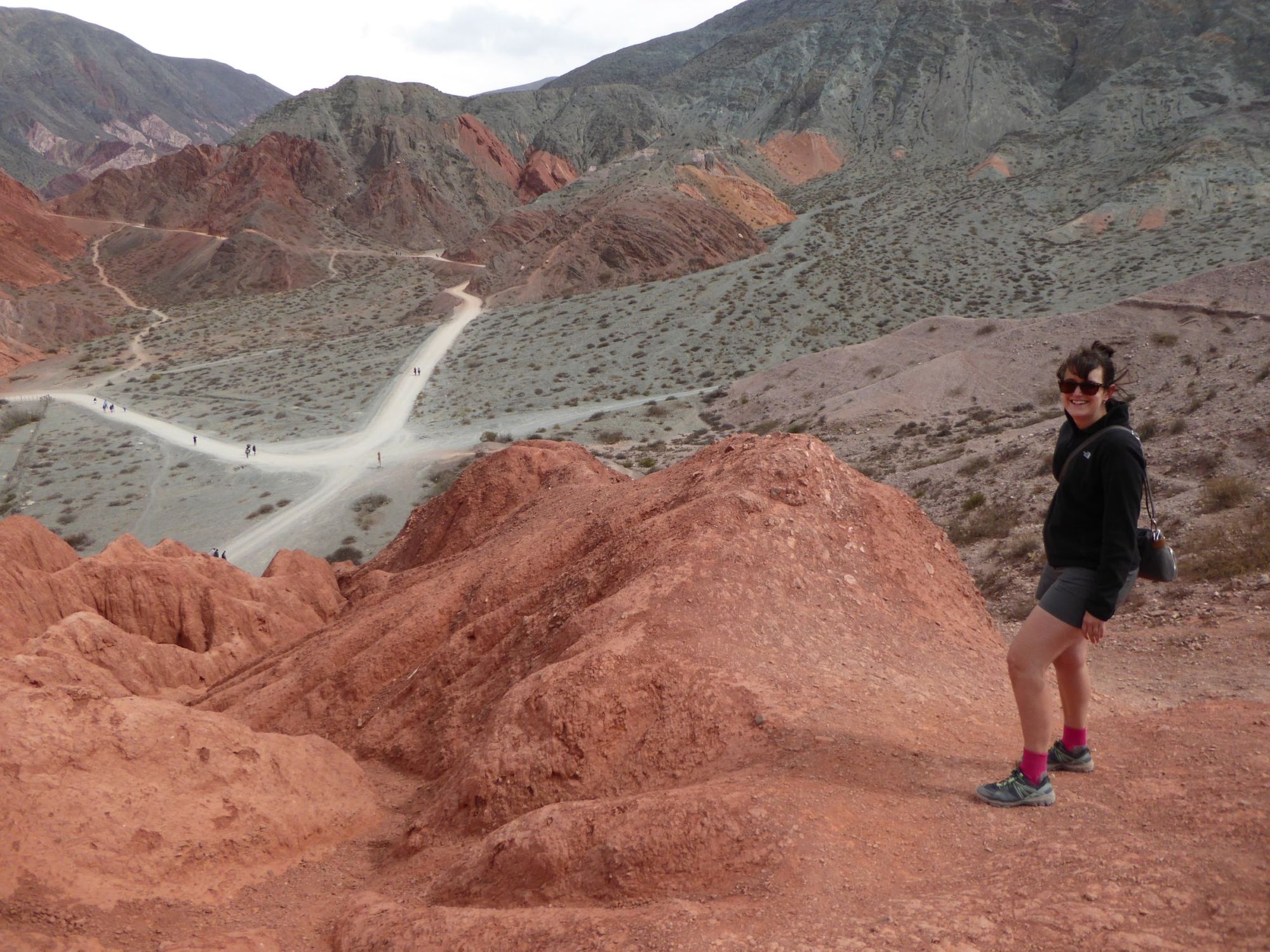The Quebrada de Humahuaca: Argentina's wild north west

The Pucará of Tilcara, a hilltop fortress built by the Omaguaca people and later seized by the Incas, is crowned by a rather ugly monument to the archaeologists who rediscovered it in 1908.
The monument is a flat-topped pyramid, a structure reminiscent of Mayan constructions in Central America, but which bears absolutely no relation to the indigenous architecture of northwest Argentina. To add insult to injury, the monument bears an inscription that commemorates the discovery that the archaeologists made 'amongst the ancient ashes of a dead people'.

We were being led around the ruins by Moisés, a Tilcara local of indigenous heritage, who was keen to highlight the ignorance and Eurocentric arrogance of the people who erected this monument.
"Our culture is not dead! Go down to Tilcara, look at the people chewing coca, the restaurants serving tamales and humitas, the textiles, the music, and tell me our culture is dead!"
This part of Argentina is a world away from the urban sophistication of Buenos Aires, a wild and surreal landscape of multi-coloured mountains and cactus-filled deserts. It's also a place where indigenous culture still thrives, in a country where it has largely been extinguished.

After leaving the city of Salta behind we had travelled north past Jujuy, through mist-strewn mountains that reminded me of Scotland. As we headed higher up into the clouds we entered the Quebrada de Humahuaca, where the mossy mountains gave way to peculiar rock formations marbled with a psychedelic array of colours: red, orange, purple, green, yellow, blue and countless shades in between.
Tilcara was our base for our first couple of days in the Quebrada, just a few dusty streets lined by low-slung adobe buildings, where leather-faced men in puffer jackets sat in the shade chewing coca leaves. Tilcara is just under 2,500 metres above sea level; not high enough for the altitude to be a problem, but enough to start to feel it a little. As we walked up to the Pucará I felt a little short of breath, and the sun was the strongest we'd felt in a while.

The fortress is strategically positioned on a hill, with stunning views of the surrounding countryside and the jagged brown mountains rising either side of the valley. Many of the stone dwellings have been reconstructed, giving you a flavour of what this place would have been like in the time of the Incas, and the whole site is covered in cartoonish cardón cacti.
Moisés explained how the Incas introduced new building techniques and agricultural methods when they conquered northern Argentina, and he talked about the trading networks that connected the various peoples who inhabited this region. The hillsides around Tilcara were used to grow potatoes, which could be traded for salt from the nearby Salinas Grandes salt flats, which could in turn be used to make llama meat into charqui (jerky), to preserve it for longer.

The Quebrada de Humahuaca is scattered with fascinating places like this, and on our second day we decided to delve even deeper. We hired a 4x4 driver for the day, a delightful chap called Americo. Born and bred in Tilcara, he seemed fascinated by these two English tourists in his car. He was surprised to learn that Great Britain is an island, that we have poor people who live on the streets, and that Margaret Thatcher was not, in fact, our Queen. As we headed further north into the Quebrada he pointed out the various crops growing in the fields, the tiny villages clinging to the hillsides, and the occasional guanaco or vicuña skittering across the landscape.
Our first stop was at the Tropic of Capricorn, marked by a monument in the shape of a giant sundial. Americo seemed a little confused about its meaning, telling us that this was where the Equator passes through Argentina (it doesn't). We tried, unsuccessfully, to remember what the Tropic of Capricorn actually signifies as we continued on to our next stop, the sleepy village of Urquia.

Urquia is famous for its church, which houses colonial-era indigenous paintings in which angels are depicted brandishing arquebuses. An arquebus was a type of primitive musket, used by the Spanish conquistadors to devastating effect against indigenous groups such as the Incas. We'd seen a copy of these paintings a few days earlier at a museum in Salta, which was just as well, as the church was closed on the day we visited Urquia.
"Saturday," shrugged Americo, the man who had brought us here solely to see this church.

Shortly after Urquia we left the main Bolivia-bound highway, and turned off onto a rough gravel track that we followed for two or three hours through increasingly spectacular mountains. The air thinned as we climbed up a series of switchbacks, stopping to admire the views at the highest point on the trail, a lung-busting 4,000 metres above sea level.

Our final destination was the tiny village of Iruya, literally at the end of the road; the only way in or out was the gravel track through the mountains. Iruya is close to the Bolivian border, set on a mountainside overlooking a river. A cute little church sat squat on the main square, and the steep cobbled streets were strewn with pink and white flags, in honour of a local festival that we had stumbled upon quite by accident.

The Fiesta de la Virgen del Rosario is a nominally Catholic celebration that weaves in elements of the pre-existing indigenous mountain cultures, including ancient fertility rituals, and it also marks the time of year when the people sow their crops in the fields. Farmers from across the region also come to Iruya during the festival to trade their produce.

We were present during a part of the festival known as the Adoration of the Cachis, which takes place in the main square in front of the church. During this ceremony, a sort of dance takes place to a musical accompaniment provided by men playing flutes, drums and a long instrument resembling an alpine horn. All of the participants in the dance are men, though some are dressed as women.

The characters include the bull, the horsemen and the negro, a sort of outsider-jester figure whose costume is based on a deeply racist portrayal of an African slave. The dancing was interspersed with play fighting and wrestling as the horsemen tried to corral the bull, or at least that's what seemed to be happening. A measure of improvisation is granted to the negro, who traditionally tries to grab women from the watching crowd, including, on this occasion, a terrified Polly.
It was a bizarre and fascinating spectacle to just happen upon; as soon as it had finished, the crowd dissipated and the village was virtually deserted again. We had a simple lunch of empanadas and tamales on a rooftop overlooking the valley, before meeting up with Americo for the drive back through the mountains to Tilcara.

We spent our last day in the Quebrada in Purmamarca, another village just a short drive from Tilcara, and the place where we had arranged to catch the bus to Chile. Purmamarca seemed a lot more touristy than Tilcara, and the main square was full of tour groups here to see the village's main attraction, the Hill of Seven Colours.

In a way it seems odd to single out just one multi-coloured hill, given that the Quebrada is full of them. The nearby village of Humahuaca has a fourteen-coloured hill, which we didn't visit, but the way in which these colours are counted seemed a bit dubious to me. Purmamarca's seven-coloured hill looms over the village, and the stripey rock face is undoubtedly impressive, but I preferred the Paseo de los Colorados. This path leads from the southeastern edge of the village through a constantly changing landscape of polychrome rocks, eventually bringing you out at the base of the Hill of Seven Colours.

The trail had none of the selfie stick-wielding day-trippers that we saw swarming around the village; here the people were outnumbered by cacti, and the only sound was the crunching of gravel underfoot. Rocks the colour of red wine abruptly turned a blue-green shade reminiscent of mouldy bread; slate grey cliffs were striped with coral pink and chalky white; and red Martian-like hills rose from a dusty desert plain speckled with prickly bushes.

This part of Argentina frequently seemed to resemble another planet, with a colour palette all of its own, and the sheer weirdness of the landscapes would only increase as our journey continued into Chile and Bolivia.

